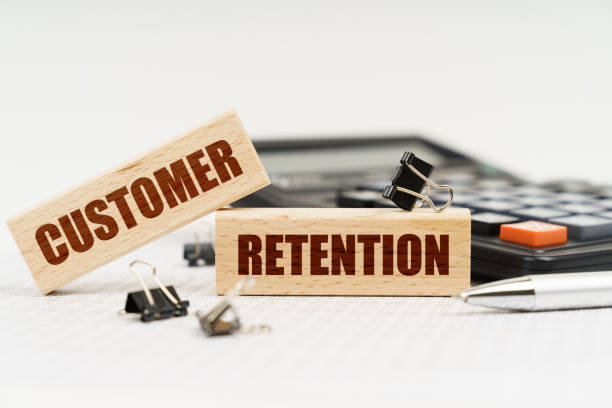Igniting Explosive Growth with Salesforce Integration with Thid-Party Apps. Rahmat Olayiwola Content Writer Table of content Introduction The Power of Integration with Salesforce Real-World Case Studies Implementing Successful Salesforce Integrations Conclusion Introduction Most efficiently run businesses use various applications during the course of carrying out their operations. The ability to connect and integrate various tools and systems has become an essential strategy for enhancing efficiency, boosting productivity, and delivering exceptional customer experiences. Among the frontrunners in this integration revolution is Salesforce – a powerhouse CRM platform that not only excels in managing customer relationships but also seamlessly integrates with third-party applications to unlock unparalleled potential. In this comprehensive guide, we’ll delve deeper into the art of Salesforce integration, weaving in captivating real-world case studies to showcase the transformative impact of creating seamless connections with third-party apps. The Power of Integration with Salesforce Unlocking Cross-Platform Synergy: Imagine a bustling e-commerce business that relies on Salesforce to manage customer interactions, while also utilizing a separate inventory management system. By integrating Salesforce with this system, the company gains the ability to synchronize inventory levels, automatically update product availability, and trigger alerts for restocking. Consequently, customers experience accurate stock information, fewer backorders, and a heightened sense of reliability, leading to increased customer loyalty and repeat purchases. Enhanced Marketing Campaigns: In the realm of marketing, consider a health and wellness startup aiming to engage customers with personalized campaigns. By integrating Salesforce with a marketing automation platform like Marketo, the startup can track customer interactions, preferences, and behaviours. Armed with this holistic view, they tailor marketing messages, recommending products or services based on individual needs. The result? A surge in engagement, higher conversion rates, and an army of delighted and loyal customers. Optimized Customer Support: For a telecommunications company managing a diverse range of service requests, Salesforce integration with Zendesk proves transformative. When customers reach out for support, service agents can access their entire interaction history, past inquiries, and ongoing issues – all within the Zendesk platform. This integration empowers agents to provide swift and accurate solutions, making customers feel valued and cared for, and ultimately leading to a substantial rise in customer satisfaction scores. Real-World Case Studies Case Study 1: Slack and Salesforce Integration for Collaboration A leading technology conglomerate recognized the need for seamless collaboration between its sales teams spread across different regions. By integrating Salesforce with Slack, sales representatives received real-time notifications about new leads, opportunities, and customer interactions, all seamlessly delivered to their Slack channels. As a result, collaboration skyrocketed, response times to leads improved significantly, and the company witnessed a remarkable 30% increase in lead conversion rates. Case Study 2: HubSpot and Salesforce Integration for Marketing Alignment In the case of a B2B startup navigating the intricate dance of marketing and sales alignment, Salesforce integration with HubSpot was a game-changer. This integration facilitated a bidirectional flow of data between the platforms, providing both teams with real-time insights into lead behaviour and interactions. As a result, the startup witnessed a 20% reduction in lead leakage, heightened lead nurturing effectiveness, and a substantial 15% boost in marketing-sourced revenue. Case Study 3: Zendesk and Salesforce Integration for Customer Support A global retail brand recognized that stellar customer support could be a potent differentiator in a competitive market. By integrating Zendesk with Salesforce, customer support agents gained the ability to seamlessly access customer order histories, preferences, and previous inquiries. This newfound efficiency resulted in a remarkable 25% reduction in average handling time, a significant improvement in first-call resolution rates, and an impressive 40% surge in customer satisfaction scores. Enjoying the Article? Sign up For Our Newsletter Implementing Successful Salesforce Integrations Identify Integration Goals: Begin by clearly defining your integration objectives. Determine whether you aim to improve communication, automate processes, enhance customer experiences, or all of the above. This clarity serves as the guiding star throughout your integration journey. Select the Right Third-Party App: In the same way a sculptor selects the perfect chisel, choose a third-party app that aligns harmoniously with your integration goals and complements Salesforce’s capabilities. Conduct thorough research to identify a reputable app that offers the features you need to achieve your objectives. Customize and Configure: Work hand in hand with integration experts to customize the integration according to your unique business processes. Map out data flows, define triggers, and ensure data consistency between Salesforce and the third-party app. This meticulous customization ensures that the integration seamlessly blends into your operational landscape. Train Your Team: As you launch your integrated solution, ensure your team is well-prepared to wield this powerful tool. Comprehensive training equips them with the skills and confidence needed to navigate the new workflows, maximize the app’s potential, and make the most of your Salesforce integration investment. Monitor and Optimize: Remember that every masterpiece is subject to refinement. Continuously monitor the integration’s performance, gather feedback from users, and remain agile in making iterative improvements. By fine-tuning your integration over time, you ensure it evolves to meet the ever-changing needs of your business. Conclusion: Salesforce integration has transcended from a mere technical endeavour to a strategic imperative for businesses determined to excel in a tech-driven world. By crafting seamless connections with third-party apps, organizations of all sizes can unlock a realm of possibilities, from harmonizing cross-platform operations to delivering personalized customer experiences. The real-world case studies showcased here stand as a testament to the profound impact of such integration, illustrating how businesses have achieved heightened efficiency, accelerated collaboration, and elevated customer satisfaction. As you embark on your Salesforce integration journey, remember that the true essence lies in your ability to set well-defined goals, select the right apps, intricately weave the threads of customization, and ensure your team is adept at utilizing this newfound synergy. With meticulous strategy, continuous optimization, and an unwavering commitment to innovation, your business can harness the remarkable potential of Salesforce integration and chart a course toward a more interconnected, efficient, and successful future. The canvas is yours – paint the masterpiece of integration excellence that defines
Igniting Explosive Growth with Salesforce Integration with Thid-Party Apps. Read More »





















